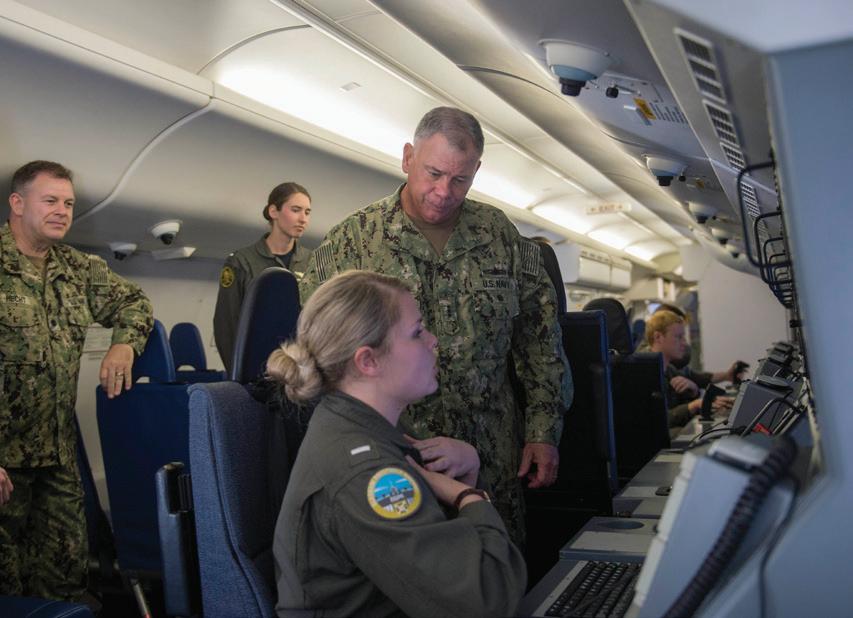
3 minute read
Chief of Naval Personnel Visits Sigonella
By Janine Scianna / NAS Sigonella Public Affairs

Rear Adm. John Nowell, Jr. meets Sailors from the VP-4 P-8A squadron
(U.S. Navy photo by MC2 Josh Coté)
Advertisement

Rear Adm. John Nowell, Jr. conducts an interview with AFN Sigonella
(U.S. Navy photo by MC2 Josh Coté)

Rear Adm. John Nowell, Jr. meets Sailors of the Quarter during a special luncheon
(U.S. Navy photo by MR2 Kyle Drummond)

Rear Adm. John Nowell, Jr. speaks with NAS Sigonella leadership
(U.S. Navy photo by MC2 Josh Coté)
Rear Adm. John Nowell, Jr., the Navy’s Chief of Personnel and Deputy Chief of Naval Operations for Manpower, Personnel, Training, and Education, clearly holds a lot of responsibility for the fleet. He is in charge of manning the fleet and making sure that Sailors are ready for the litany of jobs and tasks they will be asked to undertake in the Navy. His leadership touches the lives and career trajectories of each individual Sailor, and because of that, he visited Naval Air Station Sigonella Oct. 8-9, 2019 as part of a larger tour of Navy installations in Europe.
Nowell spent much of his time at Sigonella touching base with Sailors of all ranks. Nowell held two all-hands calls Oct. 9 to hear separately from Sailors and command leadership. While part of his mission was to relay important changes to personnel programs that are coming down the pike, he also spent a lot of time fielding questions and concerns.
During his remarks, Nowell gave an extensive overview of the progress that is being made under the Sailor 2025 initiative, which was developed in 2015 to help put into place programs that would help meet Sailors’ personnel needs ten years in the future. The three pillars of the program are:
1) Modernizing Personnel Systems in order to provide more transparency, flexibility, and ownership in Sailors’ careers.
2) Providing Ready, Relevant Learning that creates a continuum of learning during the course of Sailor’s career path that takes advantage of emerging technologies with engaging content.
3) Fostering Career Readiness by removing barriers to continued service and improving Sailors’ worklife balance, health, and wellness.
Nowell commented that continuing to modernize personnel programs was essential to meet the demands of a growing Navy. And his role, he explained, was to “institute change where it makes sense.”
Some of those changes are already happening. Promotions via meritorious advancement, or “MAP” promotions, have increased from 5 to 20%. Training for the operations specialist (OS) rate was the first to be modernized under the Ready, Relevant Learning initiative. Five more ratings will have their training modernized this year. And PSD functions are beginning to be consolidated into central locations so that Sailors will receive the same quality of service, the same way, no matter where they are assigned.
Nowell also hit home the point that receiving the “right training, at the right time” is essential to keeping Sailors growing in their careers. And that pursuing continuous learning, once scene as potentially damaging to a career trajectory, is now being seen as an asset.
So many other topics were covered— childcare needs, overseas screening, a “detailing marketplace” for enlisted Sailors—the list of pending upgrades is extensive. To learn about any of the Sailor 2025 initiatives, visit MyNavy Portal. The recruitment, development, and retainment of each Sailor will always be the centering focus as the Navy and CNP continue to streamline personnel policies and programs.









